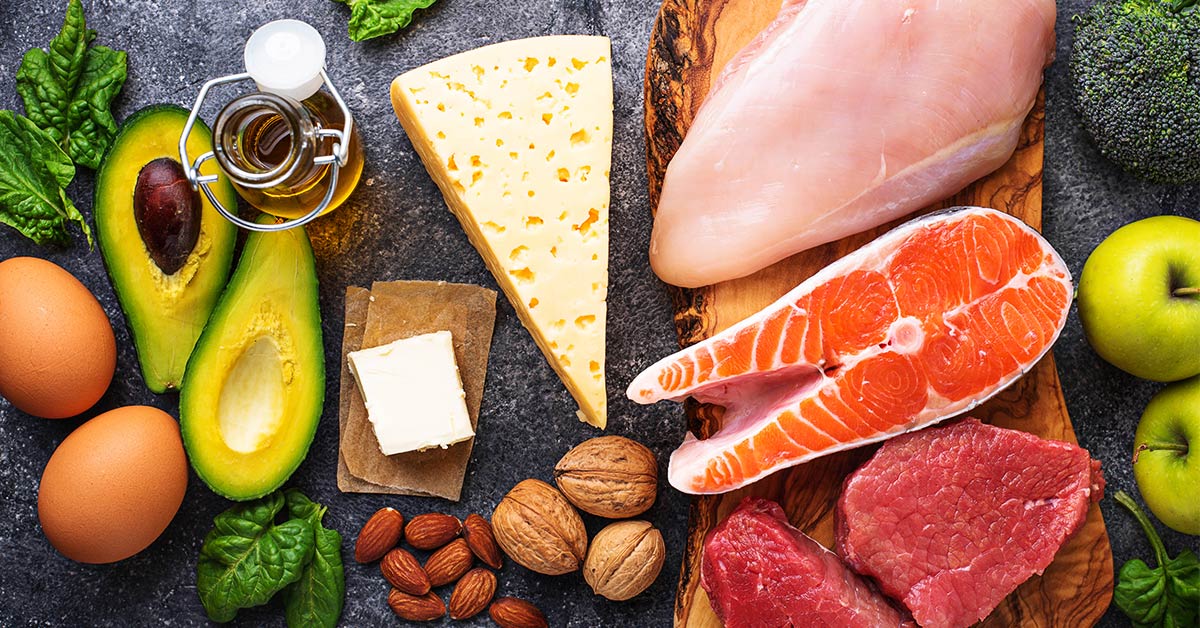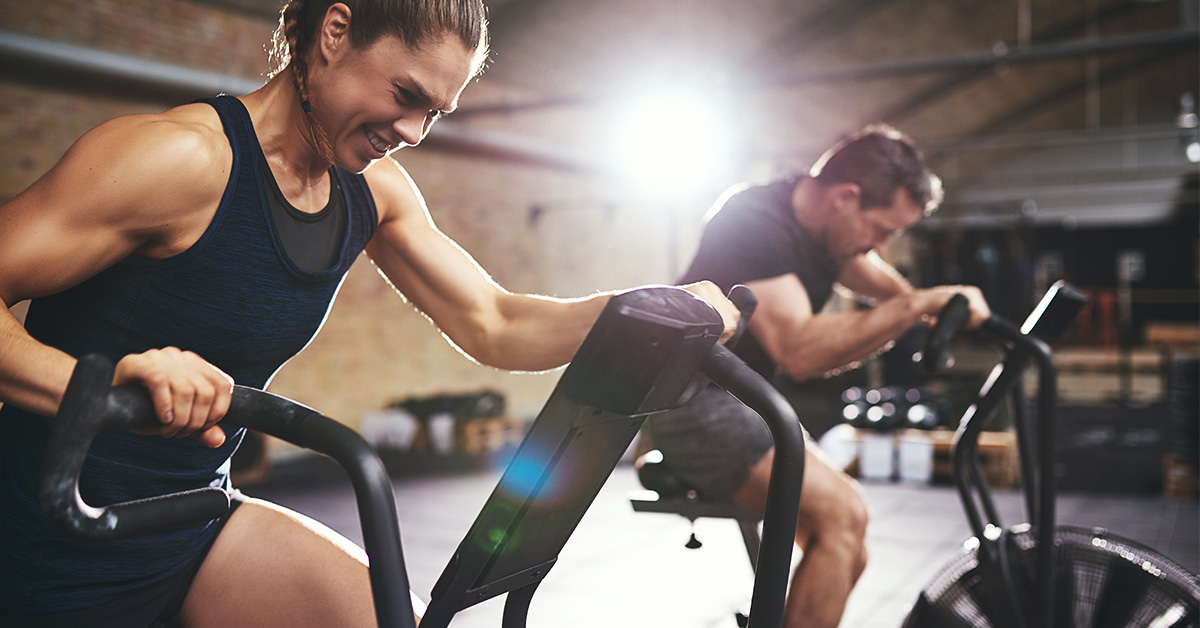
For months you are on a diet , you train 5 days a week and do everything you can to get as dry as possible. All that commitment with one goal: to show YOUR best shape in the summer! We’re not going to deny that a low enough body fat percentage is the most important thing to look good, but did you know there is even more you can do to dot the I’s? That’s what Peak Week is for: by manipulating carbohydrates, moisture and salt, you can squeeze the most out of your physical body. This way you can be 100% sure that you will look your best at a festival, a beach party, a day at the sea or on holiday!
START WITH A GOOD FOUNDATION!
To begin with, we would like to emphasize this again: make sure your base is in order! This protocol is intended to give you the finishing touch physically. That means: less subcutaneous fluid, more muscle fullness and more veins than you normally see. However, you cannot create such a finishing touch if the basis is not in order.
Is your fat percentage still well above 10%? Then these steps are not going to help you, no matter how hard you try. For best results, we recommend that you be at least below 10% body fat, but preferably a lot lower than that. Remember: we are going to manipulate moisture and glycogen, not your adipose tissue.
So have you tried this protocol and are you disappointed with the result? Then that most likely means that you weren’t ready yet.
YOU ARE NOT A COMPETITIVE ATHLETE
Then the last disclaimer before we start with the protocol. Namely that you are not a competitive athlete! In such a case, very risky measures are sometimes taken where no more fluids are drunk at all on the last day before the competition, electrolytes such as salt are completely eliminated and sometimes even diaphorers are used.
This protocol is meant to look your very best in the summer. Being dragged to the emergency room because you are completely dehydrated is not going to help you, so we are not going to take any unnecessary risks for that reason. Not drinking a drop of water at a festival where it is 30+ degrees is therefore not one of the recommendations and we strongly advise against it!
Are you a competition athlete and do you need help with the last week of your competition preparation? Then look for an experienced coach who can help you with this expertly.

7 – 4 DAYS OUT – SATURDAY TO TUESDAY
Our protocol starts 7 days before the date you want to look your best. Moisture and carbohydrate manipulation takes time, so if you think you can stuff this in 2 days, you’re going to be disappointed. So plan this well in advance so that you know what to expect and can do everything properly!
Our fictional ‘Showtime’ is on a Saturday. This means that we will start with our Peak Week Protocol the Saturday before.
From this Saturday we will start with a number of things that we will divide into cups.
DIET
To look your best next week, we need to make dietary preparations. Ultimately, you want to take advantage of a process called ‘glycogen supercompensation’. This means that your body can store more carbohydrates in the muscles than is normally the case. This ensures more muscle fullness and by combining this with moisture manipulation also less subcutaneous moisture. So your muscles are not only fuller, but the muscle definition is also more visible.
To achieve that supercompensation, however, we must first do the opposite: deplete glycogen.
You do this by minimizing carbohydrates in your diet a week before the date. We recommend a ketogenic diet with a maximum of 50 grams of net carbohydrates per day. Net carbohydrates are carbohydrates minus the fiber content. In practice, you can therefore eat enough vegetables to prevent hunger.
So your diet will look like this:
- 2 grams of protein per kilogram of body weight
- Between 0.8 and 1 gram of fat per kilogram of body weight
- 50 grams of net carbohydrates
TRAINING
At the moment you don’t want to change much about your training. For these 4 days, stick to your normal training schedule and try to train all muscle groups at least once. You can go a bit higher in the repetitions to use extra muscle glycogen, but this is not a requirement.
MOISTURE AND SALT
Finally, we have moisture and salt. These two elements are closely related and we will therefore treat them as a whole. Moisture and salt are two important factors that determine moisture retention and can help you get rid of that subcutaneous layer of moisture at the end of the protocol.
However, as with carbohydrates, we must first do the opposite of what we want to achieve. That means: drink roughly double what you normally do (Think of 5+ liters) and add extra salt to your meals so that everything is actually just a bit too salty.
This will initially ensure that you will retain some extra moisture, but later on this will help you to create a shock reaction that causes moisture to disappear like snow in the sun.

3 DAYS OUT – WEDNESDAY
After following the above for 4 days, we move on to the next phase which is undoubtedly a lot more exciting! From now on, we’re going to do the depletion workout to get any remaining glycogen out of your muscles, followed by carbohydrate loading.
You want to do the depletion training as early as possible in the day so that you have enough time to load carbohydrates afterwards. Shortly after your workout, your muscles are more sensitive to carbohydrates, so it’s a shame if you can’t train until 8 in the evening.
For the depletion training you keep everything the same as the days before.
THE DEPLETION TRAINING
Then it is finally time for the depletion training. Because you’ve been on a ketogenic diet for 4 days now, your carbohydrate stores will already be considerably lower, so that makes the process a lot easier.
Yet we do not want to take any risks here, so the depletion training consists of 3 phases:
- Training to failure
- Circuit training
- Interval training
TRAINING TO FAILURE
You start the depletion training with a round in which you train to muscle failure with about 70% of your 1RM. In practice, this will amount to about 12 repetitions per exercise. You choose basic compound exercises that you can perform safely and where failure is no problem. The following is a good build:
- Leg press
- Romanian deadlift
- Bench press
- Pull up
- Shoulder press
Try to perform all exercises for 1 set to failure at a fast pace. It goes without saying that a spotter is a valuable help in this. After all, you don’t want to get stuck doing the bench press at the start of your depletion.
CIRCUIT TRAINING
The second phase of the depletion training will take the most time and aims to drain glycogen from every muscle in your body. You will train a bit lighter (about 15 repetitions) and do not have to go to muscle failure. The latter would rather get in the way than help you. Pace is king, so choose isolation drills and machines so you can get through quickly.
We choose one exercise for each muscle group, for example:
- Leg extension
- Leg curl
- Lat pulldown
- Chest press
- Side lateral raise
- Rear delt raise
- Cable curl
- Cable pushdown
- Calf raise on the leg press
You run this circuit at high speed, after which you rest for about 30 seconds and then run it a total of 8 times. The order is not very important, so feel free to switch things up if a device is busy. In addition, a quiet gym is of course desirable.
After these 8 rounds you will probably already have a hard time, so it is time for the finishing touch.
INTERVAL TRAINING
We end the depletion training with a full-body HIIT protocol. Choose a device that addresses the whole body, such as a cross trainer, rowing machine or assault bike.
Here, try to make maximum effort for 20 seconds, followed by 10 seconds at a slightly slower pace. Keep repeating this until you ‘hit the wall’. This should take a maximum of about 15 to 20 minutes with the training you have already done before. Is this cardio still easy for you? Then something went wrong for that!
That moment when you stumble away from the rowing machine is also a bright spot at the same time. That means it’s time to load up on carbohydrates!
LOADING CARBOHYDRATES
Right after your depletion workout, we’ll move on to the next phase, one you’ve probably been waiting for a long time: loading carbs!
From here we have about 2 to 3 days until it is showtime, so there is enough time to take full advantage of this. We want to remember the following rules:
- For maximum super compensation, your body needs about 15 grams of carbohydrates per kilogram of body weight. For a man of 90 kilos that is 1350 grams of carbohydrates!
- The closer to depletion training, the more carbohydrates you want to consume. So you start to load very heavily and this decreases somewhat in the days after.
- The closer to the workout, the more fast carbohydrates you want to take. After training, you want to start with a whey shake with dextrose , while afterwards switch to more complex carbohydrates such as white rice and potatoes.
- Avoid fiber and fatty foods as much as possible from now on. Both get in the way of your super compensation and the fats are easily stored as body fat.
- Limit carbohydrates from fruit, as fructose is not efficiently stored in the muscles.
- 15 grams of carbohydrates per kilogram of body weight is a maximum. It may well be that you already have enough of 10 grams per kilo. Unfortunately, you can only discover this by experimenting, but that is why we spread the loading over several days.
If you are going to load a total of 1000 grams of carbohydrates, it is a good starting point to eat half of it on this first day. That means 500 grams of carbohydrates, a normal amount of protein and a minimal amount of fat to prevent fat storage.

MOISTURE AND SALT
We have already mentioned that we do not want to take unnecessary risks. We are therefore not going to do that and so your fluid intake will remain high like the days before. As a check, you want to make sure that your urine resembles water as much as possible. Yellow urine is a sign of dehydration, so you should drink more.
We will reduce salt from here. You are not going to remove all the salt from your diet, but lower it back to ‘normal’ values as you used for the protocol.
Both moisture and salt remain unchanged from here on for the following days.
2 DAYS OUT – THURSDAY
The day after the depletion training should already give a very good indication of how you are doing. Your muscles absorb all those carbohydrates like a sponge and since every gram of carbohydrates also absorbs ~ 3 grams of moisture, you should already look a lot fuller and drier.
From here there is no more training and a lot of it comes down to feeling. To help you with this, 3 scenarios are possible:
YOU STILL LOOK A BIT FLAT
If so, you probably have a very high carb tolerance and can eat a lot more. In that case you eat as many carbohydrates as the day before, for example 500 grams as in the example.
YOU LOOK FULL AND DRY
If you already look very good, that’s a good sign! At the same time, however, that also means that you have to watch out. If you get overconfident now and keep bunkering carbohydrates, you run the risk of overeating and getting soggy. This can ruin your entire shape, so watch out! In this case, you want to eat about 300 grams of carbohydrates of the remaining 500 grams today.
YOU ARE FULL, BUT YOU ALSO RETAIN MOISTURE
If you react very strongly to carbohydrates, it may happen that you are already retaining clearly more fluid. Fortunately we have taken enough time, because then we can now focus on letting that moisture disappear. Eat a decent amount of carbohydrates (150-200 grams) until noon and then switch back to a ketogenic diet.
That seems contradictory, but loading is now over. As long as you don’t train or exercise hard, those carbohydrates just stay where they belong: in your muscles.
By limiting the carbohydrates now, along with a lot of fluid and less salt, your body will start to excrete fluid at a rapid pace. This should make you look a lot sharper the next day.

1 DAY OUT – FRIDAY
1 day before it’s showtime and that means that we are now literally going to perfect everything. Just like the day before, you will now make adjustments based on your shape and feeling. If you are still flat now, you can plan another high day, but most here will have enough of the leftover carbohydrates that you planned in advance. In our example, this will amount to about 200 grams. As stated in the rules, you mainly want to get these from sources such as rice and potatoes.
If moisture continues to be a problem, you can add some light cardio, but keep in mind that this can reduce your muscle fullness.
Other than that, you keep drinking a lot, your salt intake remains relatively low and you don’t go to the gym to do strength training.
Do not take any risky actions such as suddenly stop drinking completely. This may be temporarily effective, but the day after when you are in full sun at a festival you will OR regret this because you become faint and maybe even pass out OR as soon as you start drinking again you will still retain moisture.
IT’S SHOWTIME – SATURDAY
And then we have finally arrived at the moment we have been working towards! Your morning shape should be very impressive by now. A combination of full muscles with a wafer-thin skin should provide clear muscle definition, visible veins and just a picture that is ‘finished’.
To get that little bit extra out of it, you can consider a number of things:
- Foods high in fast carbohydrates (sugars) make those veins stand out just a little bit more
- Salt has a similar effect
- Pumping up some light will now visually have a much stronger effect than usual
In practice, this often comes down to some simple snacks. Think of a Snickers bar, some rice cakes with jam or even food such as a pizza is often used here. A ‘Shitload’ as it is often called can therefore work effectively as a last resort.
However, be careful with this and do not get rid of complete salted caramel chocolate bars! When you overdo it, that subcutaneous fluid quickly lurks again and you see that perfect shape deteriorate from hour to hour. As always applies: enjoy in moderation and do not go too crazy.

THE PEAK WEEK PROTOCOL IN A NUTSHELL
Such a Peak Week protocol involves a lot of work and is by no means for everyone. In addition, it is a lot of planning and paying attention to whether you are doing it right. For that reason, we have briefly described the protocol for you below so that you always have a checklist to keep at hand.
7 TO 4 DAYS OUT – SATURDAY TO TUESDAY
- Keto diet with less than 50 grams of net carbs per day
- Normal protein and fat intake
- Drink plenty of water (+5 liters) and salt everything more than usual
- Do your regular workout
3 DAYS OUT – WEDNESDAY
- Perform the depletion training as early as possible where you want to deplete the whole body of carbohydrates.
- Start loading carbohydrates immediately after training. Start with fast carbohydrates and then shift this to slower carbohydrates such as rice and potatoes.
- Load a total of 10-15 grams of carbohydrates per kilogram of body weight over the next 3 days. Start high and gradually reduce this.
- Protein intake normal, fat intake is minimized.
- Fluid intake remains high, salt returns to normal.
2 & 1 DAYS OUT – THURSDAY & FRIDAY
- Measure the result in the morning and determine how many carbohydrates you are still eating these days. When you’re flat you eat more. If you are full and dry on average. If you retain moisture, you lower the carbohydrates.
- Proteins, fat, moisture and salt all remain the same.
- There is no more training.
SHOWTIME – SATURDAY
- Before the event, have a shitload with some sugars and / or salt and do some light pumping.
- Don’t go overboard with the carbohydrates this day.
- Keep your protein intake normal.
- Continue to drink enough fluids!
- And of course enjoy the party / day at the beach and the compliments!

